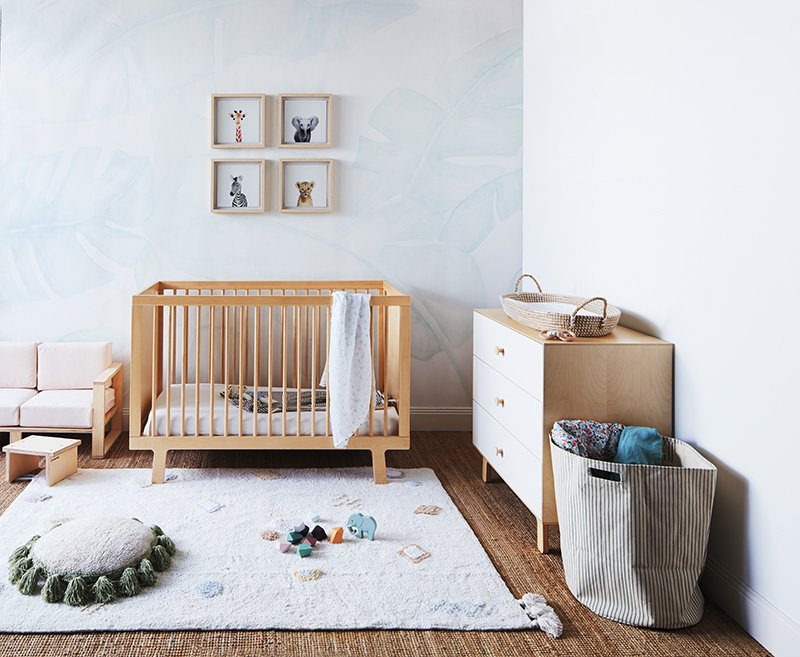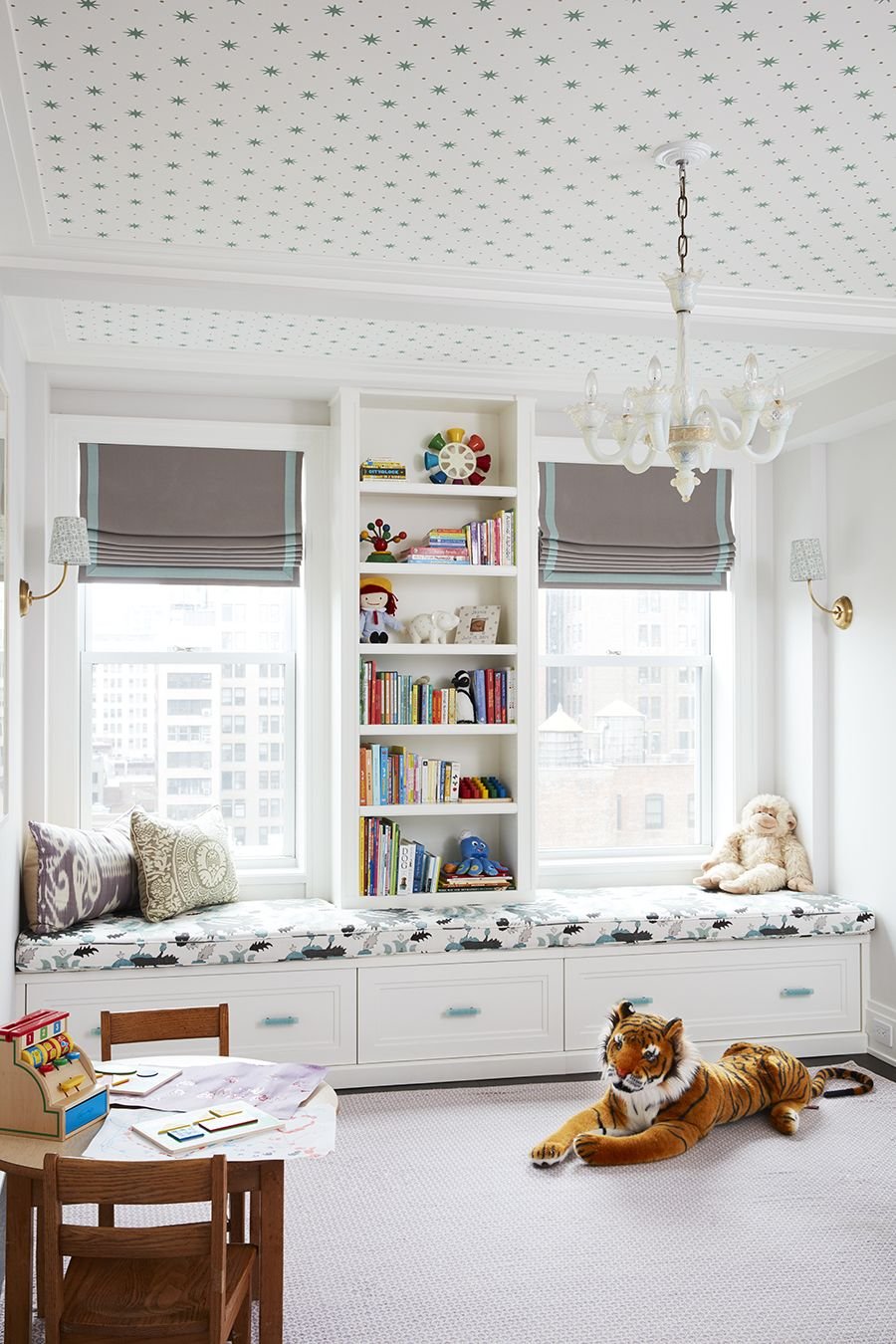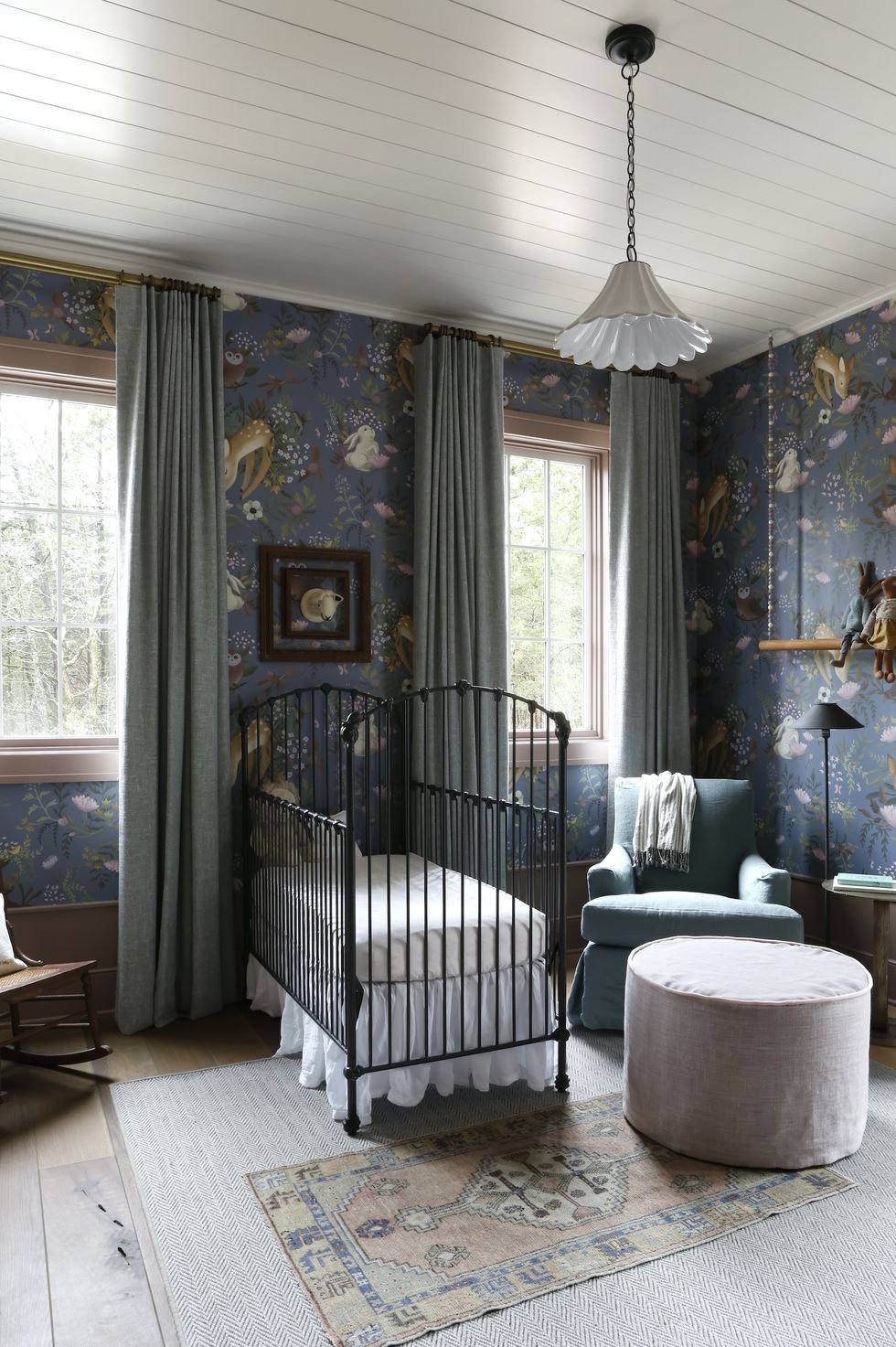When you’re expecting a baby, setting up your nursery is an exciting process but it can also be daunting – especially if you’re a first-time parent. Have you been scrolling through Instagram and Pinterest for inspiration, but don’t know where to start when it comes to designing your nursery?
We have nursery design advice so your baby’s room can be functional and beautiful no matter your style and budget. Keep reading to learn more.

Start With the Foundational Pieces for Your Nursery
When designing your nursery before you start buying anything you’ll want to plan the layout. Think about creating zones. You’ll need places for…
- Your baby to sleep
- Changing diapers
- Nursing/feeding
- Storage
- Playtime
Once you have these areas planned in your layout, these basic zones will help you nail down what furniture you need to buy – a crib, changing table, dresser, and a chair, glider, or rocker.
When in doubt, stay minimal, you don’t need to overcrowd the space with too much stuff. You’ll want a comfortable spot on the floor for your baby to have tummy time, that’ll transition to playtime as they grow. The goal should be for the space to be safe and secure for your baby and low maintenance for you.

Think Soft, Cozy, and Whimsical
When thinking about design, you want it to be playful, but not overstimulating as your nursery still has to be a calm and cozy place for your baby to feel comfortable and sleep.
If you want to add personality to the space, go for a wall feature, with wallpaper, decals, shelving, or wall art. Have one focal point and keep the rest of the design fairly minimal. However minimal doesn’t mean cold or stark. Add layered lighting (including a night light) and a range of textures and textiles.
Also, remember that your new baby will be sleeping a lot, so invest in some great blackout curtains or solid window treatments to make it a good atmosphere for naps during the day.
You not only want it to be a comfortable place for your baby, but for yourself as well. With late-night and early-morning feedings, it’s a room you be spending lots of time in, so make sure you have comfortable seating and it’s a space you enjoy being in.

Safety First
When it comes to nursery design, safety is a top priority. Think about placing your crib so that it’s visible from the door to give you a clear view of the baby when you’re not in the room. That also means investing in a good baby monitor.
Make sure your nursery (and the rest of your home) is baby-proofed because before you know it, your little one will be up and about.
Babys, toddlers, and even kids spend a lot of time on the floor so you should have flooring that’s easy to clean yet soft. If you have hardwood floors throughout your home, then make sure you have a great area rug for your nursery.
Avoid furniture, paint, or toys that include harmful chemicals. Any paint, wallpaper, or carpet you include should be non-toxic. Make sure you check the materials of everything that your purchase for the baby’s room.
For more safety advice, check out The Bump.

Go For Transitional and Timeless Nursery Design
Though you want to focus on having the nursery set up for everything your baby will need when they arrive home, also think long-term.
Your baby will likely be using this room as a toddler and throughout their childhood, so you’ll want it to be a space that can grow with them. This will help you avoid totally redesigning the space every couple of years.
Of course, they won’t be using certain baby things like a crib past a certain age, but as for other furnishings and decor think about what’ll work for different stages of their life.

For example, instead of a changing table, get a dresser that can double as a changing table with a changing tray or pad. This way it’ll function for them as a baby, but also just as well when they get older. Think about selecting a convertible crib that can change into a toddler or full-size bed. Or a crib with built-in storage. Also, invest in multifunctional pieces that you can continue to use as they grow.
When it comes to decor and accents avoid anything that’s overly babish because they’ll outgrow it sooner than you realize. Have a neutral foundation because as kids get older they’ll want to add their own style to the space with accents that reflect their personality and interests.
Things like bedding and other accessories can be changed more easily, than larger furniture and wallpaper. The larger foundational pieces, like flooring, drapery, and wall coverings should remain timeless. Or go with wall decals or removable wallpaper that you can change more easily.

Get Professional Interior Design Help
When it comes to designing your nursery you may realize that other areas of your home could use an upgrade. Or you might want someone to take the stress of nursery design off your shoulders. If you can relate, then think about hiring a professional interior design team. At AHG Interiors, we’ll take care of the entire design process for you from start to finish.
We’ll help you with difficult design questions like:
- How to create a gender-neutral color scheme?
- What furniture to invest in for your nursery?
- How to plan the best nursery layout?
- What decor and accents to include?
- How to make sure your nursery works with the rest of your home design?
- How to design a functional nursery?
We’ll help create a beautiful design that will work for you and your family in the long term. Contact us today to get started!




